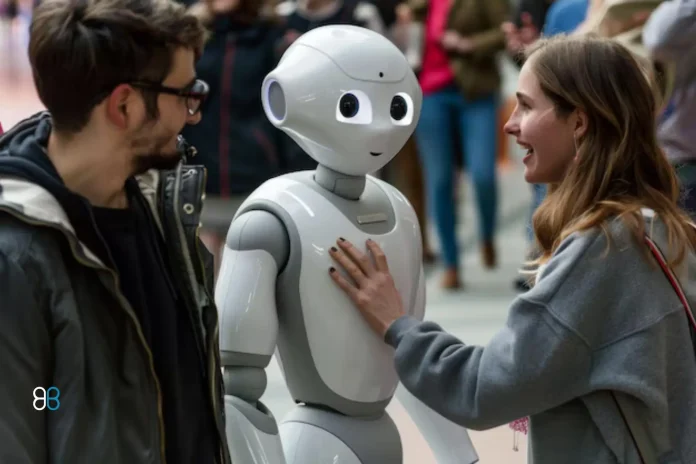Robotics is one of the most rapidly advancing fields of the last ten years, the robotics market having been estimated to reach over 200 billion U.S. dollars by 2025. This rapid growth shows not only the market need for robotic automation but also a level of sophistication that is expected from general-purpose robots at given projects. In a major advancement to robotics research, scientists from the Massachusetts Institute of Technology (MIT) have presented a new approach for teaching these robots using generative artificial intelligence methodology. Through using generative AI, MITs framework – the Heterogeneous Pretrained Transformers (HPT) enables robots to acquire a multi-tasking skill set, improving their versatility in response to the various settings without requiring lots of training again.
Understanding HPT Framework
HPT framework is an innovation from the conventional robot training ways that involve the set up of complicated routines and data accumulation processes for the corresponding tasks. However, this new strategy provides robots with generative AI to replace generalization acquired from previous tasks in different conditions. This essentially means that when a robot has been trained with embodiments learnt using this method, it is capable of not only acting in particular ways but also transferring that learning to other scenarios without the need for further training.
Source :MIT Unveils Novel Method of Training General-Purpose Robots Using Generative AI Techniques
Key Benefits of the Innovative Method
Here are some of the key benefits that are associated with the innovative method:
- Enhanced Learning Efficiency
So, the once time-consuming robot training is reduced to the barest minimum by the generative AI model. This is actually a disadvantage of a preconceived robotic system in that robots do not need to be reprogrammed for each new novel task; they can gradually learn how to tackle a wide range of similar and unique tasks as advertised above.
- Improved Generalization
According to HPT, robots are able to grasp the fundamentals of a task and hence be in a position to solve other tasks using the acquired knowledge. This flexibility is paramount given that robots are applied in situ that has uncertain characteristics.
- Broad Application Potential
We see the generalization of this study in manufacturing systems, health care systems, and indeed self-driving cars. The robots designed in this method would cover many tasks, making them more productive machines.
- Scalability
Another advantage of the proposed method is it can be implemented at different levels of robots’ sophistication. Such scalability is important to incorporate robotic systems into multiple operational settings ranging from industrial use to home usage.
Real-World Applications of General-Purpose Robots
There’s a lot that generative AI training methods developed at MIT can be used for:
- Manufacturing
It was possible to design robots that could move from building one product to the other with little effort causing a considerable amount of time to be saved so far as production is concerned.
- Healthcare
Surgeon-supporting robots could supposedly be designed in a way that will allow them to quickly comprehend the demands presented to them by the employees of medical facilities and become able to carry out a wide range of assignments, beginning with the care for patients and ending with assistance in operations.
- Service Industry
In hospitality, it is possible to use robots in performing tasks including at the front desk, cleaning and even interacting with customers with the aim of enhancing efficiency and guests’ satisfaction.
- Autonomous Vehicles
Self-driving cars can use generative AI to adapt performance during a large variety of driving conditions in order to increase safety during difficult scenarios.
Future Implications
The proposed inclusion of generative AI in the training of industrial robots could revolutionise entire sectors. Increasingly robots are capable of learning from data and experience in real time, trends that could lead in the future to better cooperation with human workers and safer workplaces as well as higher productivity.
- Human-Robot Collaboration
This form of development will ultimately make robots better teammates in tasks making work more dynamic.
- Customization
As robots begin to be able to learn who they are interacting with and what is happening along the process, they could be designed to provide certain services more specifically to certain users.
- Continual Learning
Subsequent developments of this training technique may facilitate update training such that robots can continue to learn in a real environment after having been deployed in an application.
Conclusion: Paving the Way for Next-Gen Robotics
MIT’s introduction of the Heterogeneous Pretrained Transformers framework represents a significant step forward in the field of robotics. As a method that fundamentally relies on generative AI, this technique offers an especially strong solution toward the training of general-purpose robots, which are specifically important in surmounting problems that have always plagued the creation of versatile robotic systems. The possibilities for this science are numerous, it opens up opportunities for the creation of wiser robots that can fulfil hard and multifaceted duties throughout the economy. Tune in for the next part of the series to understand more about future prospects of robotics and changing the world by AI.



